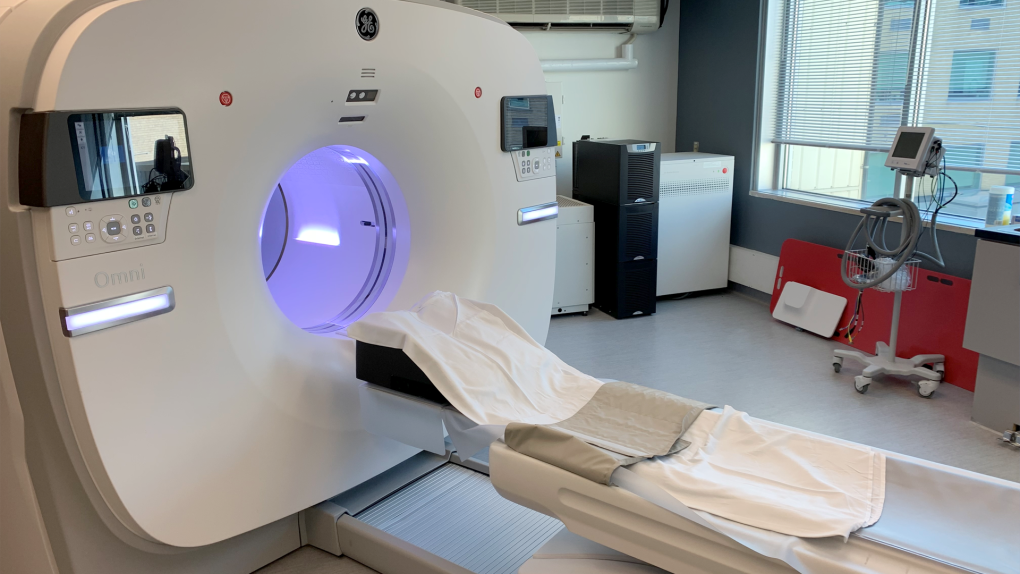Inside the Molecular Imaging and Theranostics Department at St. Joseph’s Health Care in London, Ont. (formerly Nuclear Medicine), a patient is prepped for imaging.
She was moved inside the giant tube and scanned from head to toe. In the room next door, medical staff monitored the images coming in on their screens.
A procedure that used to take about 45 minutes is now down to less than 15 minutes.
Because of the speedier process, patients are exposed to less radiation.
“Comparing our old scanner to the current scanner, we would be able to do about one patient per hour,” explained Stephen Nelli, the director of Medical Imaging and Breast Care at St. Joseph’s. “Whereas now we’re looking at about two to three patients per hour. So that effect multiplied over a year is very significant.”
Nelli and other medical professionals at St. Joseph’s are singing the praises of Canada’s first, next generation, state of the art Omni Legend PET/CT, installed at St. Joseph’s last September.
With images from AI driven technology, doctors say they can precisely detect abnormalities or disease, including cancer and early signs of Alzheimer’s.
Medical Physicist Ting-Yim Lee and an imaging technologist study PET/CT images at St. Joseph’s Health Care on May 31, 2024. (Bryan Bicknell/CTV News London)
“Using this machine, we would be able to detect abnormalities in the brain that would eventually lead to Alzheimer’s,” said Ting-Yim Lee, director of PET/CT Research at Lawson Health Research Institute (Lawson) and medical physicist at St. Joseph’s Hospital. “And now there are drugs available that would be able to kind of stop the decline of going into cognitive problems.”
Nelli added, “A lot of patients are more familiar with the CT or CAT scan that shows the anatomy within your body, and a PET/CT is that CAT scan, but if you can imagine, it’s like somebody going through it with a highlighter and exactly pin-pointing where he physician needs to look.”
Nervous patients walk through the hospital doors every day and find themselves in overwhelming situations. But the new technology and new approach to treatment can make their experience that much more comfortable, said Nelli.
“Being able to give them the confidence that they’re going to be able to get their scans quickly and they don’t have to endure a long scan means the world to them,” he said.
The new PET/CT is expected to lead to groundbreaking clinical research in areas such as breast cancer, prostate cancer, Alzheimer’s disease, epilepsy, and obesity.
“This is a fantastic direction for us to push not only the research, but also is improving the health care of the patients that we are seeing in this hospital,” said Ting.

